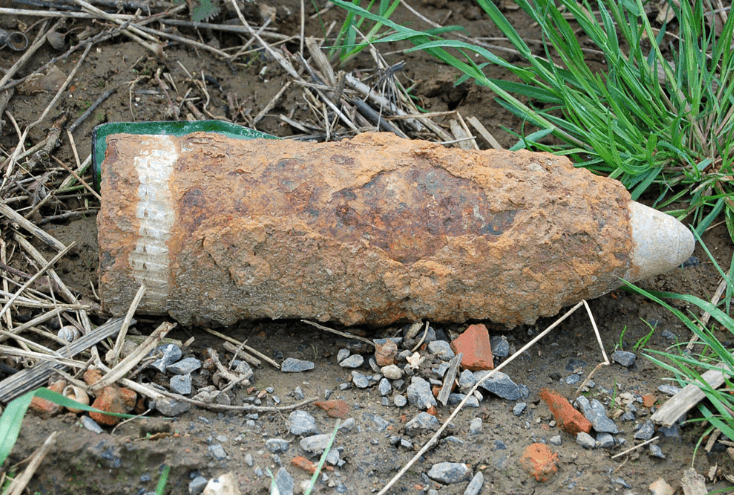WWII shell explosion; one killed and two injured after mishandling UXO
A World War II projectile exploded at a logging site in Eastern Romania on Monday, killing one man and severely injuring two others. It is reported that one of the men struck the UXO with a hammer.
A pyrotechnics team went to the site to investigate what type of projectile exploded and if the blast was accidental. Two witnesses said the three men were seen trying to cut the projectile.

UXO finds in Romania
In 1944 the Russian Army pushed the German Army back into Romania. As a result, a number of battles were fought in the east of the country. Battlefields are usually contaminated with UXO and consequently war relic finds such as this are not uncommon.
Unexploded shells which exhibit diagonal imprinted grooves on the base of the round, as shown in the photograph above, are particularly dangerous. This is because the grooves confirm that the shell has been fired and therefore the fuse has failed and may now be in a delicate condition.
Are deaths by UXO common?
A shell explosion in Romania is not a common occurrence, with such incidents relatively infrequent across the continent. This is the result of relatively good education, less fragile UXO types and lower UXO concentrations.
The most heavily contaminated region in the world is Southeast Asia, where UXO related deaths are frequent. The USA dropped millions of small, delicate cluster munitions during the Vietnam War and these are all too often mishandled by children.
Some 270 million of these small bomblets were dropped over Laos PDR alone, with approximately 80 million failing to detonate.
UXO Risks
Unexploded ordnance continues to pose a significant challenge to construction and development projects across the UK and around the world. By leveraging our expertise in this field, we strive to ensure that projects can proceed with safety and confidence.
If you have a site that you would like advice on please contact the team for an informal discussion.
Keep up to date with Brimstone UXO by following us on Facebook, Instagram, Twitter, LinkedIn and YouTube.